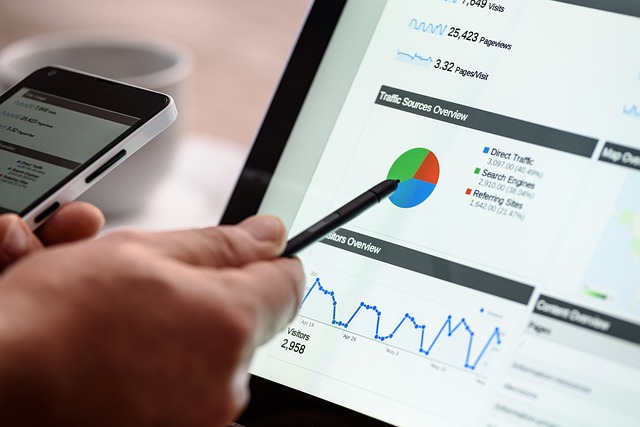Internal linking best practices
Key benefits of internal linking
Internal linking is a powerful strategy that offers a range of benefits for website owners. One key advantage is the ability to guide users to relevant content within the same website easily. This not only improves the user experience by facilitating seamless navigation but also increases the overall engagement and time spent on the site. By strategically linking related pages, businesses can effectively showcase their expertise, products, or services to visitors, encouraging them to explore more and potentially convert.
Furthermore, internal linking plays a vital role in enhancing SEO efforts. By creating a network of interlinked pages, website owners can establish a clear hierarchy and signal to search engines the importance and relevance of specific content. This helps search engine crawlers to index the site more effectively, boosting the visibility and ranking of individual pages in search results. Ultimately, a well-planned internal linking structure can contribute to improving the overall organic traffic and authority of a website.
How internal linking improves user experience
Internal linking plays a crucial role in enhancing user experience on a website. By strategically interconnecting relevant pages within a website, users can easily navigate through different sections or topics without feeling lost or confused. This seamless transition from one piece of content to another not only keeps users engaged but also helps them discover more valuable information that meets their needs.
Moreover, internal linking can assist users in finding additional resources or related articles that deepen their understanding of a particular subject. This not only demonstrates the credibility and expertise of the website but also encourages users to spend more time exploring the content, ultimately leading to improved user satisfaction and retention. By incorporating coherent internal links within the content, websites can guide users on a journey that aligns with their interests and keeps them invested in the site’s offerings.
The impact of internal linking on SEO
Internal linking plays a crucial role in enhancing the search engine optimization (SEO) efforts of a website. By strategically interconnecting various pages within a website through internal links, it allows search engines to crawl and understand the structure of the website more effectively. This helps search engines index the website’s content better, leading to improved visibility and higher rankings in search results.
Furthermore, internal linking aids in distributing link juice, also known as authority or equity, across different pages of the website. By linking high-quality, relevant content to other pages on the site, the authority of the linked pages is passed on, boosting their SEO value. This not only helps in establishing a hierarchical structure for the website but also encourages visitors to explore more content, thereby increasing engagement and dwell time – both of which are important factors considered by search engines for ranking websites.
Strategies for effective internal linking
When implementing internal linking strategies, it is crucial to ensure that the links are relevant and add value to the user experience. One effective approach is to conduct a thorough content audit to identify potential linking opportunities within your website. By strategically placing internal links within your content, you can guide users to related articles or pages that provide additional information on the topic they are currently exploring.
Furthermore, it is important to use descriptive anchor text that accurately conveys the content of the linked page. Avoid generic phrases like “click here” or “read more” as they provide little context to both users and search engines. Instead, opt for anchor text that includes relevant keywords related to the linked content. By following these best practices, you can enhance your website’s navigation, increase user engagement, and improve your overall SEO efforts through effective internal linking strategies.
Common mistakes to avoid in internal linking
When implementing internal linking on your website, it is crucial to avoid some common mistakes that can hinder your SEO efforts and user experience. One common mistake is using generic anchor text like “click here” or “read more.” This does not provide any context to search engines about the linked page’s content, affecting your website’s ranking potential. Instead, use descriptive anchor text that accurately represents the linked page’s topic to signal its relevance to search engines and users.
Another mistake to avoid is excessive internal linking within the same anchor text on multiple pages. While internal linking is beneficial, overdoing it can appear spammy to users and search engines. Ensure that your internal links are natural and add value to the user’s navigation experience, rather than cluttering the content with unnecessary links. Strive for a balance between providing helpful internal links and maintaining a clean and user-friendly website interface.
How to strategically plan internal linking
When strategically planning internal linking, it is crucial to start by setting clear objectives for your website. Define the key pages that you want to drive traffic to and prioritize them based on their importance to your overall business goals. Consider the user journey and how you can guide visitors through your site seamlessly by connecting relevant pages that offer value and information.
Next, conduct a thorough audit of your website to identify existing internal linking opportunities and areas for improvement. Look for high-traffic pages that could benefit from additional links to drive traffic deeper into your site. Analyze the anchor text used in your internal links to ensure they are descriptive and relevant to the linked page’s content. By strategically planning your internal linking structure, you can enhance user experience, improve SEO, and ultimately boost the overall performance of your website.
Using anchor text effectively in internal linking
When it comes to internal linking, the anchor text you choose plays a crucial role in guiding both users and search engines through your website. Effective anchor text should be concise, descriptive, and relevant to the linked content. By using keywords that accurately reflect the linked page’s topic, you not only improve the user experience but also provide search engines with valuable context about the content’s subject matter.
Moreover, varying your anchor text helps to create a more natural and organic linking structure within your website. By using a mix of branded terms, long-tail keywords, and generic phrases, you can enhance the overall SEO performance of your website. This diversified approach to anchor text not only improves the navigational flow for users but also signals to search engines the breadth and depth of your content, thereby boosting your site’s visibility and credibility.
The relationship between internal linking and website architecture
The structure of a website’s internal linking plays a vital role in shaping its overall architecture. When strategically planned and implemented, internal linking can effectively connect different pages within a website, enhancing navigation for users and search engine crawlers. This cohesive internal linking structure not only improves the overall user experience but also helps search engines understand the hierarchy and relevance of content on the site, ultimately influencing its ranking in search results.
Furthermore, the relationship between internal linking and website architecture can impact the flow of link equity throughout the site. By strategically interconnecting pages based on their importance and relevance, website owners can effectively distribute link authority and ensure that valuable pages receive the necessary boost in search engine rankings. A well-structured internal linking system can also help in establishing thematic relevance across different pages, reinforcing the website’s topical authority and credibility within its niche.
Measuring the success of internal linking efforts
To gauge the effectiveness of internal linking efforts, it is crucial to analyze key performance indicators (KPIs) such as the increase in page views and time spent on site. Tracking the click-through rates of internal links and the reduction in bounce rates can provide valuable insights into how well the internal linking strategy is engaging users and guiding them deeper into the website. Additionally, monitoring the conversion rates of key landing pages that are being linked to internally can indicate the impact of internal linking on driving desired actions by visitors.
Furthermore, leveraging tools like Google Analytics to track the flow of traffic through internal links and the paths users take on the website can help in assessing the overall impact of internal linking efforts. By setting specific goals and conversion funnels within Google Analytics, website owners can measure the success of internal linking in driving users towards desired outcomes, such as completing a purchase or filling out a contact form. Regularly monitoring these metrics and making necessary adjustments to the internal linking strategy based on the data collected can lead to continuous improvement and optimization of internal linking efforts for better overall performance.
Best practices for internal linking in e-commerce websites
When optimizing internal linking for e-commerce websites, it is crucial to focus on creating a seamless navigation experience for users. One best practice is to strategically link product pages to related categories or complementary items to encourage visitors to explore more products. This not only enhances user experience but also increases the likelihood of generating more sales. Additionally, utilizing anchor text that is descriptive and relevant to the linked page can help both users and search engines understand the purpose of the link.
Another key best practice in internal linking for e-commerce websites is to implement a breadcrumb navigation structure. Breadcrumbs provide users with a clear path back to the main categories or homepage and help them understand their current location within the website. This enhances the overall user experience by simplifying the navigation process and reducing the number of steps required to return to a previous page. Incorporating breadcrumbs also improves the website’s SEO by creating a hierarchical structure that search engines can easily crawl and index.
Internal linking for blogs and content websites
Internal linking is a crucial aspect of optimizing blogs and content websites for both users and search engines. By strategically linking related articles and pages within the website, you can enhance the user experience by guiding visitors to explore more relevant content. This not only increases the time spent on your website but also reduces the bounce rate, indicating a higher level of engagement.
Moreover, internal linking plays a significant role in improving the overall SEO performance of blogs and content websites. By creating a network of interconnected pages, you help search engines discover and index your content more efficiently. This can lead to higher rankings in search results, increasing your website’s visibility and driving organic traffic. Additionally, well-structured internal linking can also distribute link equity throughout the website, boosting the authority of individual pages and enhancing the overall domain authority.
Internal linking for service-based businesses
Internal linking plays a crucial role in optimizing the online presence of service-based businesses. By strategically interlinking relevant pages within a website, service providers can enhance user navigation and improve the overall user experience. This not only helps in guiding website visitors to important information but also boosts the credibility and authority of the website in the eyes of search engines.
Effective internal linking for service-based businesses involves linking service pages to related blog posts or case studies, guiding potential clients towards a deeper understanding of the services offered. By creating a network of interlinked pages, service providers can create a seamless user journey, leading visitors from one relevant piece of content to another, ultimately increasing engagement and conversions. Moreover, incorporating internal linking with targeted anchor text can also assist in improving the website’s organic search visibility, ensuring that potential clients can easily find and access the services they are seeking.
How internal linking can boost your website’s authority
Internal linking plays a crucial role in enhancing a website’s authority in the eyes of search engines. By strategically linking related pages within your site, you establish a network of interconnected content that showcases your website’s depth and breadth of information. Search engines like Google recognize this structure as a signal of credibility and relevance, ultimately boosting your website’s authority and trustworthiness in search results.
Furthermore, internal linking allows you to guide visitors through your website in a coherent and informative manner. By providing easy access to relevant content through well-placed internal links, you not only improve user experience but also demonstrate to search engines that your website offers valuable and comprehensive information on a particular topic. This seamless navigation within your site helps establish your website as a go-to resource in your industry, ultimately reinforcing its authority and expertise.
The role of internal linking in reducing bounce rate
Internal linking plays a crucial role in reducing bounce rates on websites. By strategically linking related content within your site, you can keep visitors engaged and encourage them to explore further. When users find relevant links that provide additional valuable information, they are more likely to stay on your site longer, decreasing the bounce rate.
Furthermore, internal linking helps to create a seamless navigation experience for users. By guiding visitors to other pages that are related to their interests or queries, you can enhance their overall user experience and keep them on your site. This not only reduces bounce rates but also increases the likelihood of conversions and repeat visits, ultimately boosting the performance of your website.
Tips for optimizing internal linking for mobile users
When optimizing internal linking for mobile users, it is crucial to prioritize user experience by ensuring that all links are easily clickable and accessible on smaller screens. Remember that mobile users have limited screen space, so it’s important to keep your internal links concise and strategically placed throughout the content. Avoid cluttering the page with excessive links that could overwhelm mobile users and lead to a negative browsing experience.
Another essential tip for optimizing internal linking for mobile users is to utilize descriptive anchor text that clearly indicates where the link will redirect the user. This not only helps mobile users understand the relevance of the linked content but also assists search engines in indexing and ranking your website effectively. Additionally, consider the placement of internal links within the mobile content to ensure they are seamlessly integrated without disrupting the overall flow of information for users on the go.






